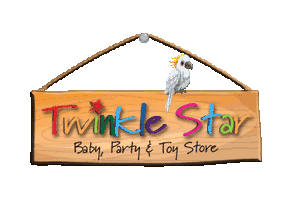Children and car safety has always been a concern and car seats for infants and toddlers was recently made mandatory by law in Trinidad and Tobago. Making the right choice based on safety, budget and your child's age is important below is a full guide from http://www.babycenter.com.
The lowdown on infant car seats
You have a choice of two types of car seat for your baby: an infant car seat or a convertible car seat.
A rear-facing infant car seat (suitable for babies up to 22 or 35 pounds and 29 to 32 inches tall) fits babies snugly during the first year or so. A convertible seat – so called because it converts from a rear-facing seat for babies and toddlers to a forward-facing seat – carries children from birth to somewhere between 40 and 80 pounds and up to 50 inches tall, depending on the seat.
Given the option of a convertible car seat, why bother with an infant seat? ![]()
The most important reason is safety. Although most newborns fit in a convertible car seat, experts agree that babies under 20 pounds. are better off in the smaller infant car seats. They're contoured to hold newborns securely and offer good support in all the right places.
Convenience is another big consideration. Infant car seats are smaller and lighter than convertible car seats and usually have a handle for easy carrying. They snap in and out of a base you install in the car, and in and out of your stroller, so you can transfer your baby from place to place without waking him.
In contrast, the larger and heavier convertible car seats must be installed in the car. When you reach your destination you have to unbuckle your baby and transfer him to a stroller or other carrier.
The disadvantage of an infant car seat is financial: When your child outgrows it, you'll have to buy a convertible model. Larger babies may outgrow the seat long before age 1, while smaller babies may fit in the seat until their first birthday or beyond. (Babies tend to exceed the height limit for an infant car seat before the weight limit.)
What to look for when buying
 Ease of use: Look for the National Highway Transportation Safety Administration's five-star rating system: The more stars a car seat has, the easier it is to use. The NHTSA ratings take into account how easy it is to install the seat in your car and secure your child in it, as well as the content and clarity of the instruction manual.
Ease of use: Look for the National Highway Transportation Safety Administration's five-star rating system: The more stars a car seat has, the easier it is to use. The NHTSA ratings take into account how easy it is to install the seat in your car and secure your child in it, as well as the content and clarity of the instruction manual.
 A car seat base: Most infant car seats come with a plastic base you install in your car. You snap the car seat into the base and buckle up your child when you're ready to go. When you reach your destination, simply unsnap the car seat from the base and take it with you. Some people buy an extra base to keep in other vehicles.
A car seat base: Most infant car seats come with a plastic base you install in your car. You snap the car seat into the base and buckle up your child when you're ready to go. When you reach your destination, simply unsnap the car seat from the base and take it with you. Some people buy an extra base to keep in other vehicles.
 A five-point safety harness: The straps – one for each shoulder, one for each thigh, and one between your baby's legs – are more adjustable (and thus safer) than older designs.
A five-point safety harness: The straps – one for each shoulder, one for each thigh, and one between your baby's legs – are more adjustable (and thus safer) than older designs.
 Easy adjustments: You'll need to adjust the harness as your child grows, so avoid seats that make this complicated. Better car seats allow you to adjust the straps and harness height easily from the front. A few models even have one-hand belt adjustments with quick-release buckles.
Easy adjustments: You'll need to adjust the harness as your child grows, so avoid seats that make this complicated. Better car seats allow you to adjust the straps and harness height easily from the front. A few models even have one-hand belt adjustments with quick-release buckles.
 LATCH (lower anchors and tethers for children): Since 2002, all car seats and vehicles have been compatible with the LATCH system. LATCH allows you to attach the car seat directly to your vehicle instead of using the seat belt to secure it. This can make installation safer and easier. Most infant car seats use the lower anchors only, not the tethers.
LATCH (lower anchors and tethers for children): Since 2002, all car seats and vehicles have been compatible with the LATCH system. LATCH allows you to attach the car seat directly to your vehicle instead of using the seat belt to secure it. This can make installation safer and easier. Most infant car seats use the lower anchors only, not the tethers.
 Easy cleaning: Babies and messes go hand in hand, but a surprising number of car seats come with covers you can't take off. A detachable, machine-washable cover makes cleanup much easier.
Easy cleaning: Babies and messes go hand in hand, but a surprising number of car seats come with covers you can't take off. A detachable, machine-washable cover makes cleanup much easier.
 Comfort: A well-padded seat with plenty of head support gives your baby a better ride.
Comfort: A well-padded seat with plenty of head support gives your baby a better ride.
Side-impact protection: Some car seats have special energy-absorbing foam and other features designed to better protect your baby's head and chest in a side-impact accident.
Important safety notes
How to install
You might think that anyone who can read an instruction manual and follow directions can install a car seat correctly. In reality, it's not so easy. According to the National Highway Traffic Safety Administration (NHTSA), 3 out of 4 car seats are improperly installed.
 For safety's sake, have your car seat and its installation checked by a professional.
For safety's sake, have your car seat and its installation checked by a professional.
For advice on avoiding the most common car seat installation mistakes, see our article on installing a car seat.
Where to install
Car seats must be installed in the backseat. For babies and toddlers under age 2, install the car seat facing the rear of the car. Experts say it's safest to keep your child rear-facing as long as possible, at least until your child is 2 years old or reaches the maximum rear-facing height and weight limit for your car seat. (Most newer convertible seats can handle kids up to 40 pounds or so in a rear-facing position.)
Secondhand seats We don't recommend buying used car seats. Secondhand seats could be missing important parts, have been involved in an accident (even unseen damage can affect the way a seat functions), fall short of current safety standards, or have been recalled due to faulty design. Moreover, plastic gets brittle as it gets older, so a seat that's too old could break in a crash.
We don't recommend buying used car seats. Secondhand seats could be missing important parts, have been involved in an accident (even unseen damage can affect the way a seat functions), fall short of current safety standards, or have been recalled due to faulty design. Moreover, plastic gets brittle as it gets older, so a seat that's too old could break in a crash.
If you use a secondhand seat, make sure it has never been in an accident, is less than five years old, and comes with all parts and instructions.
What it's going to cost you
Infant car seats range in price from about $60 to $250.
If your baby will ride in more than one car, you can buy a car seat and base for each car or – a less expensive option – buy additional bases and move the car seat from car to car.
Source: http://www.babycenter.com/0_how-to-buy-an-infant-car-seat_5754.bc?showAll=true


Comments